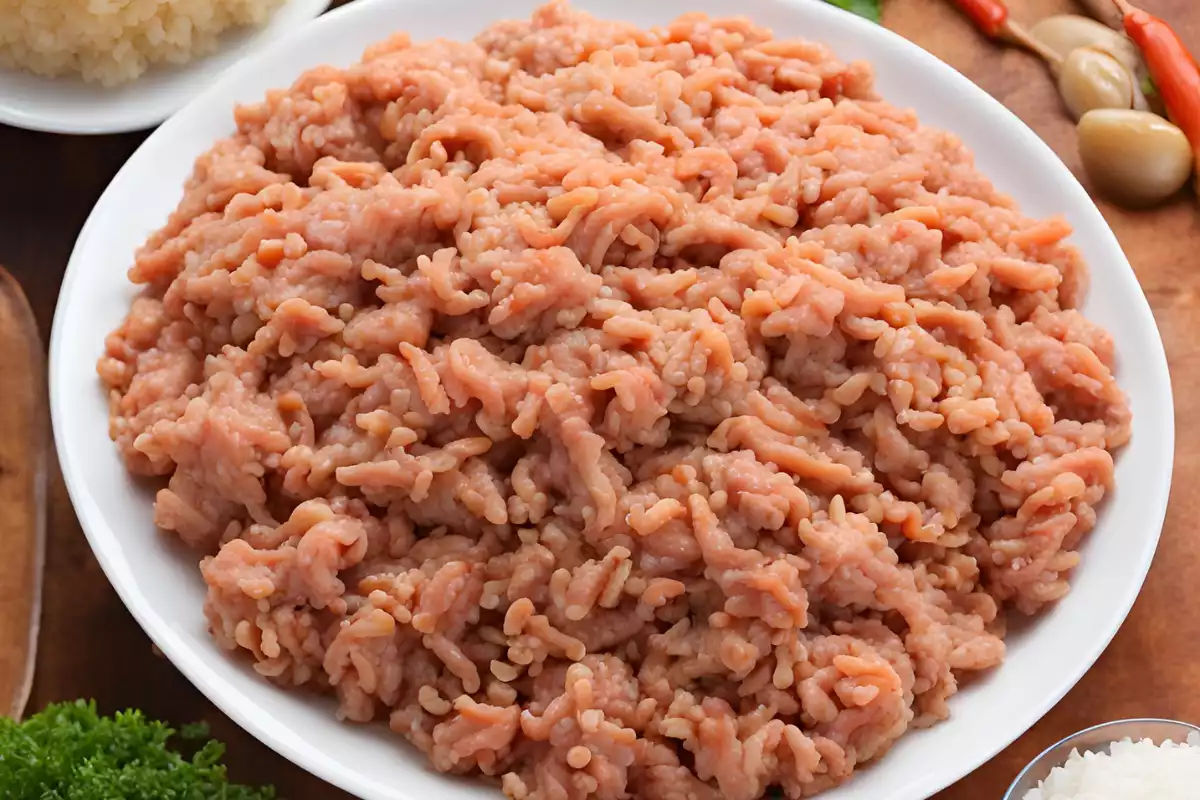Introduction to Chicken Varieties: Minced vs. Ground
When it comes to cooking with chicken, the texture and preparation of the meat can vastly affect the outcome of your dishes. In this comprehensive exploration, we delve into the nuances between minced chicken and ground chicken. Although they may seem similar at first glance, understanding their differences is crucial for both novice cooks and seasoned chefs alike. This article will guide you through the definitions, culinary uses, nutritional content, and preparation techniques of both minced and ground chicken, helping you make informed choices in the kitchen.
Introduction to Chicken Meat Varieties
Understanding Minced and Ground Chicken
Chicken is a versatile ingredient that finds its way into a plethora of recipes, from quick weekday dinners to elaborate gourmet meals. But when recipes call for minced or ground chicken, confusion often arises. Is there a real difference? Absolutely, and it’s not just about texture!
Minced chicken is typically hand-chopped or processed in a way that retains a chunkier, more distinct texture. It’s ideal for dishes where you want to feel the meat’s presence, like in stir-fries or filling for dumplings. On the other hand, ground chicken is processed through a meat grinder, resulting in a finer, more uniform consistency perfect for burgers, meatballs, and more.
Understanding these differences is not just culinary pedantry; it affects how your food cooks, tastes, and satisfies. By the end of this article, you’ll not only grasp the distinctions but also learn which type to use for your next meal masterpiece. Let’s chop (and grind) right into it!

What is Minced Chicken?
Characteristics of Ground Chicken
When embarking on a culinary adventure, knowing whether to use minced or ground chicken can significantly impact the dish’s success. Let’s break down the definitions and key differences to ensure you choose wisely for your next kitchen endeavor.
Minced chicken is made by finely chopping chicken meat into small pieces, usually with a knife or a food processor. This method gives you more control over the texture, resulting in a coarser, more textured product. Minced chicken is fantastic for dishes where the meat needs to stand out or blend seamlessly with other chunky ingredients.
On the flip side, ground chicken is produced by passing chicken meat through a meat grinder or food processor equipped with specific blades to create a finer, paste-like consistency. This process ensures that the chicken is uniform in texture, which is ideal for recipes requiring a smoother blend of ingredients, such as in patties or meat sauces.
Key Differences:
- Texture and Consistency:
- Minced chicken retains a chunkier, more fibrous texture.
- Ground chicken is smoother and more homogeneous, making it bind better in recipes.
- Cooking Behavior:
- Minced chicken cooks unevenly sometimes, which can be a culinary feature in some dishes.
- Ground chicken cooks uniformly, providing a consistent taste and texture throughout.
- Culinary Applications:
- Minced chicken is preferred in recipes like stir-fries or fillings where the texture is appreciated.
- Ground chicken excels in dishes like meatballs or burgers where a fine, even texture is crucial.
Understanding these nuances will not only enhance your cooking but also elevate the final dish. Whether you’re stirring up a quick stir-fry or forming the perfect patty, knowing your chicken is the first step to culinary greatness.
Culinary Applications
Recipes Using Minced and Ground Chicken
The versatility of chicken as a culinary staple is unmatched, especially when you dive into the uses of minced and ground chicken. Each form brings its unique qualities to recipes, enhancing flavors and textures. Here’s how you can best utilize each type in your cooking:
Minced Chicken is particularly adept at soaking up flavors, making it a superb choice for dishes that are rich in spices and seasonings. Its coarser texture provides a satisfying chew, which is ideal for:
- Stir-Fries: Quick cooking at high heat allows the minced chicken to caramelize while retaining its robust texture.
- Dumplings and Fillings: The chunky consistency is perfect for fillings, as it melds well with other ingredients while maintaining its distinct bite.
- Homemade Chicken Burgers: When combined with a binding agent, minced chicken makes hearty, flavorful burgers that stand out from their ground counterparts.
Ground Chicken, on the other hand, has a finer texture that suits a variety of comforting, homestyle recipes. It’s particularly effective in dishes where it needs to blend seamlessly with other components:
- Meatballs and Meatloaves: Ground chicken binds well with breadcrumbs and eggs, resulting in tender, juicy balls or loaves.
- Sauces and Bolognese: Its smooth texture integrates perfectly into sauces, providing a protein-rich base without overwhelming the sauce’s delicate flavors.
- **Las
agna and Stuffed Pastas:** Ground chicken layers beautifully with pasta and cheese, offering a lighter alternative to beef.
Substituting Minced for Ground Chicken
Wondering if you can swap minced and ground chicken in recipes? You certainly can! However, consider the textural differences and cooking times to ensure your dish turns out delicious. Minced chicken can replace ground in most recipes if you don’t mind a bit more texture, and vice versa if you prefer a smoother consistency.
Using the right type of chicken not only honors the recipe’s intent but also caters to personal preferences, making each meal a tailored culinary experience. Whether you’re cooking for health reasons, flavor profiles, or just to try something new, both minced and ground chicken offer endless possibilities in the kitchen.
Nutritional Content Analysis
Health Implications
Chicken is a beloved protein source worldwide due to its versatility and health benefits. Both minced and ground chicken offer nutritional advantages, but understanding their slight differences can help you make healthier choices aligned with your dietary needs.
Nutritional Benefits of Chicken:
Chicken, in general, is an excellent source of lean protein, which is crucial for muscle building and repair. It also provides important vitamins and minerals such as B vitamins, iron, and zinc. However, the way chicken is processed can affect its fat content and caloric value.
Minced Chicken:
- Typically lower in fat if minced from lean cuts like chicken breast.
- Retains more of its natural juices, potentially increasing its vitamin and mineral content if not overcooked.
- Ideal for low-fat diets when prepared with minimal added oils or fats.
Ground Chicken:
- Often includes a mix of dark and white meat, and sometimes skin, which increases its fat content.
- The grinding process may lead to a loss of some nutrients due to exposure to air and potential overcooking.
- Provides a richer source of iron and zinc from the inclusion of darker meats.
Comparative Nutritional Values:
To give a clearer picture, here’s how minced and ground chicken compare in a typical serving:
- Calories: Ground chicken is generally higher in calories due to its higher fat content.
- Protein: Both minced and ground chicken are excellent sources of protein, though the exact amount can vary slightly based on the cuts used.
- Fat: Minced chicken made from breast meat is leaner, whereas ground chicken includes more fatty parts.
Making Healthier Choices:
When choosing between minced and ground chicken, consider what your meal aims to achieve. If you’re watching your calorie intake or managing fat levels for health reasons, lean minced chicken might be the better option. However, for those needing more satiety or flavor, ground chicken provides a more indulgent choice.
Also, how you prepare the chicken can make a big difference. Cooking methods like grilling or baking are healthier options compared to frying, helping to retain the maximum nutritional benefits while minimizing added fats.
By understanding these nutritional nuances, you can better plan meals that fit your health goals without sacrificing taste or satisfaction. Whether you opt for minced or ground chicken, you’re making a wholesome choice that supports a healthy, balanced diet.
How to Prepare Minced and Ground Chicken at Home
DIY Chicken Mincing and Grinding Techniques
Creating your own minced and ground chicken at home is not only economical but also allows you to control the ingredients and texture of your meat. Here’s a guide to help you master these techniques, ensuring you get the best results tailored to your recipes.
Preparing Minced Chicken:
To prepare minced chicken, you’ll need a sharp knife or a food processor. Here’s how to do it:
- Select the Right Chicken: Opt for boneless, skinless chicken breasts or thighs, depending on your preference for leaner or richer meat.
- Chop the Chicken: If using a knife, start by cutting the chicken into small cubes. Then, continue to chop the pieces until they reach the desired size and consistency. For a finer mince, use a rocking motion with your knife over the chopped pieces.
- Using a Food Processor: For those who prefer a quicker method, a food processor is ideal. Cut the chicken into one-inch chunks and pulse in short bursts until you achieve the desired texture. Do not over-process to avoid turning the chicken into a paste.
Preparing Ground Chicken:
Ground chicken requires a meat grinder or a food processor with specific settings. Here’s how to ground chicken at home:
- Cut Chicken into Cubes: Similar to mincing, start by cutting the chicken into even cubes that will fit easily into your grinder.
- Grind the Chicken: Feed the cubes into the grinder, using a medium to fine setting for a smooth texture. If using a food processor, pulse the cubes until they are evenly ground.
- Mix Ingredients: If desired, you can mix in seasonings or other ingredients like onions and garlic during the grinding process to enhance the flavor.
Tips for Optimal Results:
- Keep Everything Cold: When working with chicken, keep the meat and equipment as cold as possible to prevent the fat from melting and to ensure a smooth grind or mince.
- Cleanliness is Key: Always clean your equipment thoroughly before and after use to avoid contamination.
- Season Wisely: Season the chicken after grinding or mincing to ensure even distribution of flavors.
By preparing your minced or ground chicken at home, you gain the flexibility to adjust the fat content and flavorings, making your meals healthier and more personalized. Whether you’re crafting a homemade burger or a comforting meatloaf, these techniques will elevate your cooking, bringing fresh, high-quality chicken into your favorite recipes.
Frequently Asked Questions
Popular Queries Addressed
When it comes to cooking with chicken, several questions often arise, especially regarding the differences and uses of minced and ground chicken. Here are answers to some of the most common queries to help you better understand how to use these versatile ingredients in your kitchen.
What is minced chicken used for?
Minced chicken is perfect for recipes that benefit from a chunkier, more textured meat. It’s ideal for stir-fries, where the chicken can absorb flavors quickly while maintaining a satisfying bite. It’s also great in dumplings or as a filling for tacos, where its robust texture complements the other ingredients.
Can I use ground chicken instead of minced in a recipe?
Yes, ground chicken can often be used as a substitute for minced chicken, especially in recipes where a finer, more homogenous texture is desired. It works well in dishes like meatballs, burgers, and meatloaf, where binding ingredients help form a consistent and cohesive mix. Just be mindful of cooking times, as ground chicken may cook faster due to its finer texture.
How can I make ground chicken at home?
To make ground chicken at home, you can use a meat grinder or a food processor. Start by cutting boneless, skinless chicken into small, even chunks. Freeze these chunks for about 30 minutes to firm them up before grinding, which helps achieve a smoother consistency. Grind the chilled chicken using a medium setting on your grinder, or pulse in a food processor until it reaches the desired texture. For added flavor, consider mixing spices, herbs, or other aromatics into the chicken during the grinding process.
What are the health benefits of using minced or ground chicken?
Both minced and ground chicken are excellent sources of high-quality protein, essential for muscle growth and repair. They are also lower in fat and calories compared to red meats, making them a healthier choice for meat-based dishes. Opt for chicken sourced from organic or free-range farms whenever possible to ensure the highest nutritional benefits and ethical standards.
Is there a difference in cooking times between minced and ground chicken?
Yes, there can be. Minced chicken, with its chunkier texture, may require slightly longer cooking times to ensure that all pieces are thoroughly cooked. Ground chicken, being finer, tends to cook more quickly and evenly. Always ensure that chicken reaches the safe internal temperature of 165°F (74°C) to prevent any foodborne illnesses.
By familiarizing yourself with these aspects of minced and ground chicken, you can enhance your culinary skills and broaden your home cooking repertoire, making every chicken dish a delightful experience.
Summary and Best Practices
Final Thoughts and Recommendations
As we wrap up our exploration of minced and ground chicken, it’s clear that both preparations have their unique roles in the culinary world. Each brings distinct textures and flavors to dishes, and understanding these differences can significantly elevate your cooking.
Recap of Major Differences:
- Minced chicken offers a coarser texture that is perfect for recipes where the meat needs to be felt and savored.
- Ground chicken provides a finer texture that blends smoothly with other ingredients, ideal for recipes requiring a homogeneous consistency.
Best Practices for Using Each Type of Chicken:
- Use minced chicken for texture-rich dishes like stir-fries and fillings, where its robust nature enhances the meal.
- Opt for ground chicken in dishes that require binding, like meatballs or burgers, where its finer grind provides the perfect consistency.
Encouragement to Experiment in the Kitchen:
Don’t hesitate to experiment with both types of chicken in your recipes. Understanding and utilizing the unique characteristics of minced and ground chicken will not only improve your dishes but also expand your culinary capabilities. Try substituting one for the other and observe the differences in texture and flavor, adjusting your cooking techniques as needed to achieve the best results.
Moreover, by preparing minced and ground chicken at home, as discussed in Part 5: Preparation Techniques, you have the power to customize the fat content and seasonings, making your meals healthier and more tailored to your taste preferences. Remember, the key to great cooking is not just following recipes but also understanding the ingredients you
work with.
In conclusion, whether you choose minced or ground chicken, each form can contribute uniquely to your cooking, proving that even small details can have a big impact on the final outcome of your dishes. Happy cooking, and may your meals always be delicious and satisfying!

